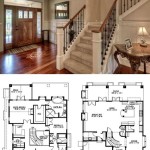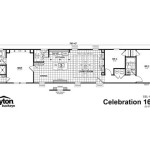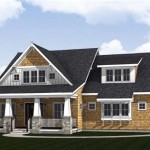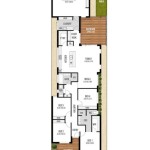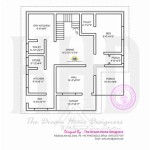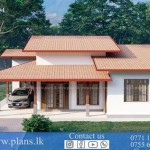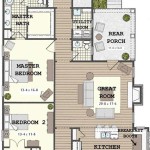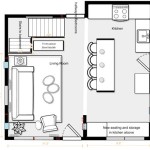Reverse Floor Plans: Living Spaces Upstairs and Downstairs
In recent years, reverse floor plans, also known as upside-down homes, have gained popularity for their unique and functional design. These homes feature living spaces on the upper floor, offering panoramic views and abundant natural light, while the bedrooms and other private areas are located on the lower floor.
Embracing reverse floor plans offers several key advantages:
- Maximized Views: Placing living spaces on the upper floor elevates them to capture breathtaking views of the surrounding environment. Whether it's a picturesque skyline, rolling hills, or a serene waterfront, the elevated positioning provides a panoramic perspective that enhances the living experience.
- Abundant Natural Light: The upper floor's strategic placement allows for large windows and skylights, flooding the living areas with ample natural light. This creates a bright, airy, and inviting atmosphere that contributes to well-being and reduces reliance on artificial lighting.
- Privacy and Serenity: Reversing the traditional layout provides enhanced privacy for bedrooms and other private spaces on the lower floor. This separation offers a quiet and secluded retreat away from the hustle and bustle of living areas.
- Enhanced Outdoor Connection: Reverse floor plans often incorporate balconies or terraces on the upper level, providing seamless access to outdoor living spaces. This direct connection to the outdoors extends the living areas and creates opportunities for relaxation, entertaining, and enjoying the fresh air.
However, it's important to consider both the advantages and potential drawbacks of reverse floor plans before making a decision:
Pros:- Dramatic and captivating views
- Exceptional natural light throughout living areas
- Increased privacy for bedrooms and other private spaces
- Direct connection to outdoor living areas
- Potential for energy savings with strategic placement of windows
- May not be suitable for families with small children or individuals with mobility issues
- Potential for noise and temperature differences between levels
- Increased cost due to specialized construction techniques
- Limited space for outdoor areas on the upper level
Ultimately, the decision of whether to opt for a reverse floor plan depends on individual preferences, lifestyle, and specific site conditions. If maximizing views, natural light, and privacy are priorities, a reverse floor plan can provide a unique and rewarding living experience. However, if accessibility, seamless flow between levels, and outdoor space on the upper floor are essential, a traditional floor plan may be more suitable.

Reverse Living Home Design Geelong Pros Cons

Reverse Living Home Design Geelong Pros Cons

Luxury Two Story Modern Style Reverse Living House Plan 4270

Why You Should Consider A Reverse Living Home Design Philadelphia Luxury Homes For The Daly Group

Reverse Living A Unique Concept Abm Homes

Contemporary House Plan With Upstairs And Downstairs Outdoor Space 86022bw Architectural Designs Plans

Reverse Living House Plans Beach Homes W Inverted Floor

Why We Love Reverse Floor Plans Sdc House

Massena Stylish And Contemporary Home Design In Nsw Mcdonald Jones Homes

Duplex Design

